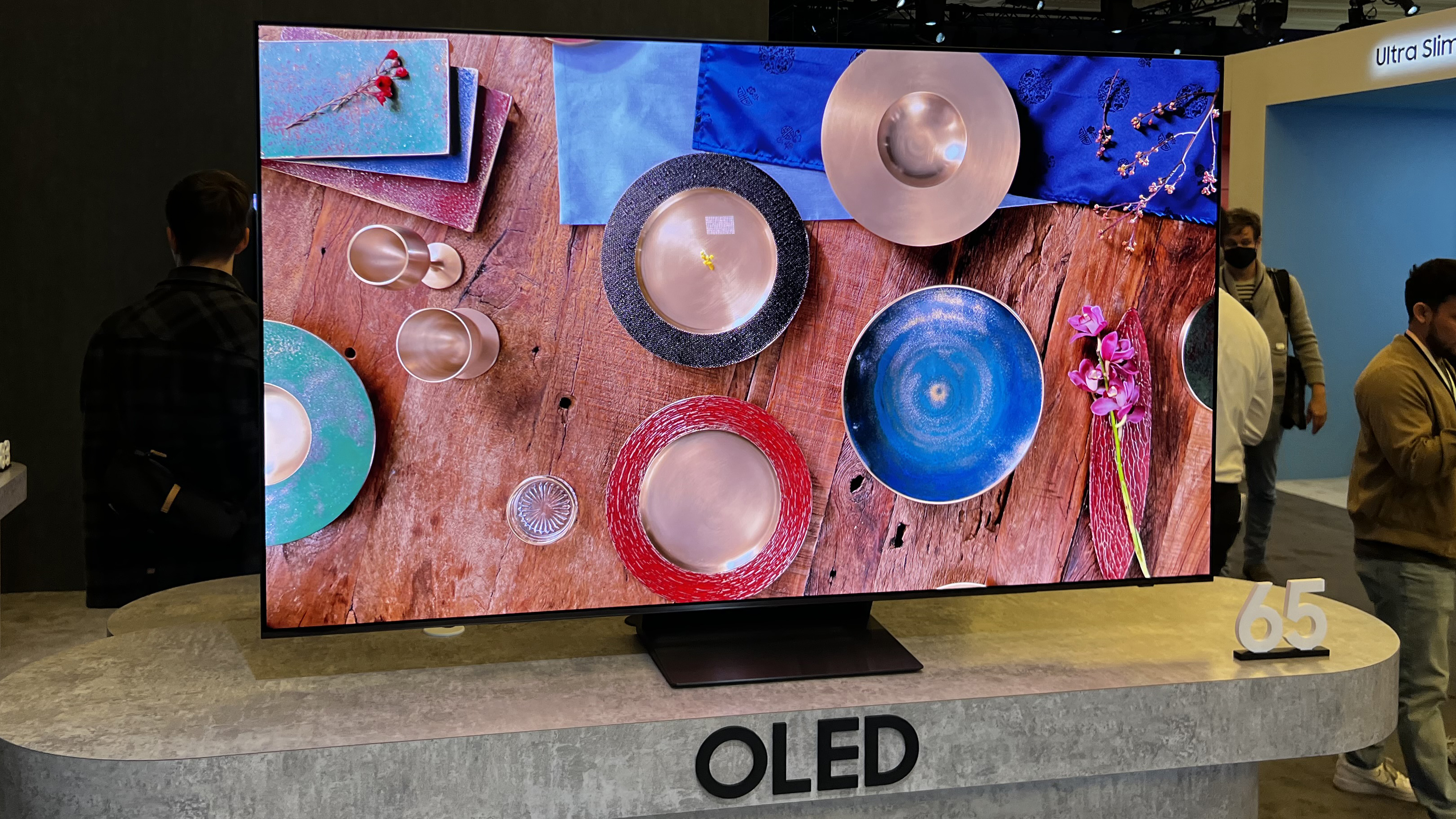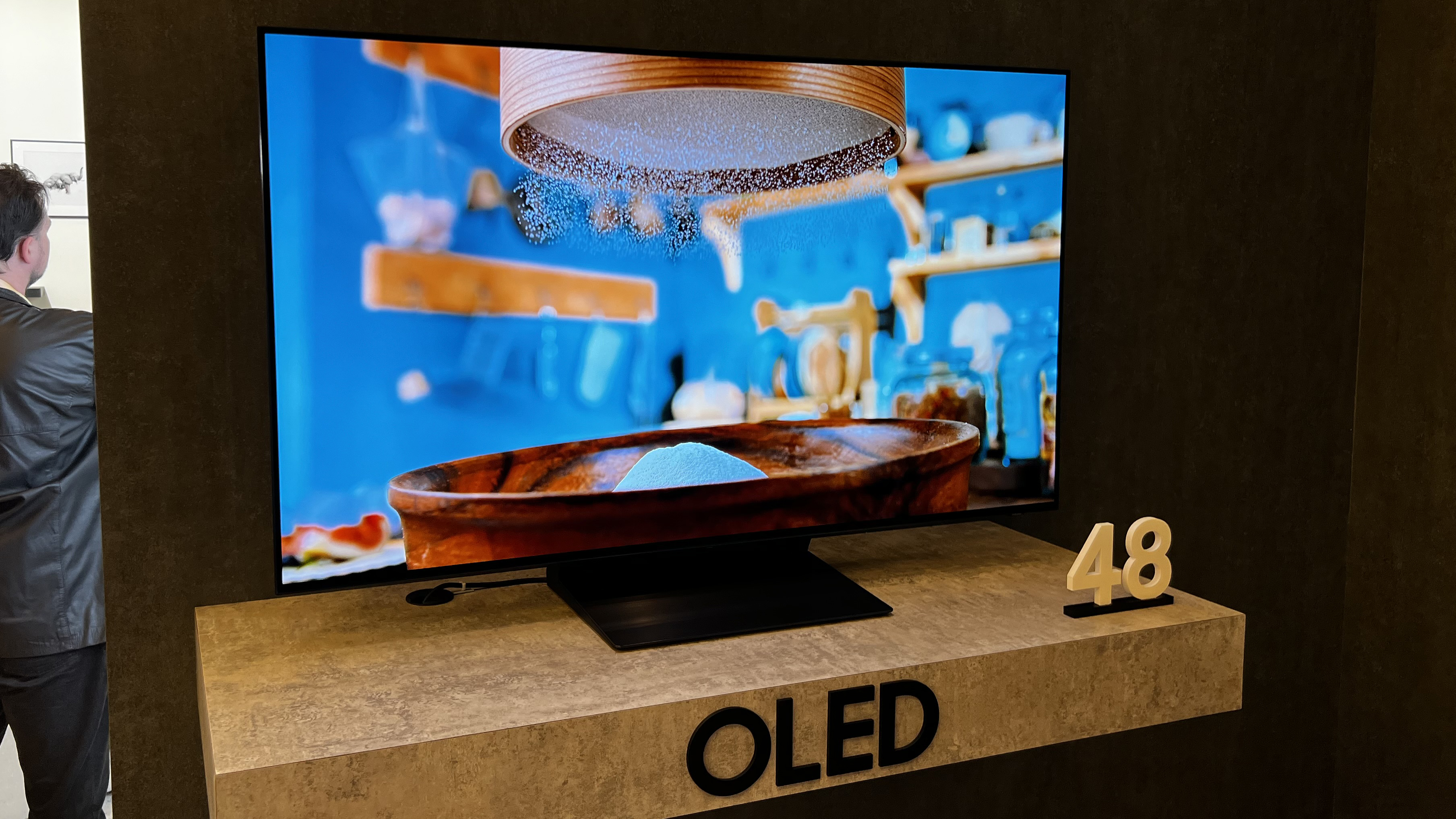"A premium experience … regardless of the specific panels": Samsung responds to OLED TV 'screen lottery' reports, and it's not reassuring
The successor to last year's best TV may use two different panels with different performance

A report from The Elec in South Korea says that the new Samsung S90D – the successor to our TV of the year for 2023 – will be made using two different types of OLED TV panels, with different levels of performance, in its 55-inch, 65-inch and 77-inch sizes. You're unlikely to be able to tell which panel you will get when you buy the TV, so you won't know exactly what you've paid for until it arrives (via FlatpanelsHD).
For background, there are essentially only two mid-range screens used in the best OLED TVs. One is a W-OLED panel manufactured by LG Display, the other is a QD-OLED panel made by Samsung Display. Samsung's QD-OLED panel is almost certainly the brighter of the two (given that it was significantly brighter last year, and this year's QD-OLED panel is claimed to be 20% brighter), and the two have slightly different looks when it comes to color.
TechRadar asked Samsung for confirmation on the accuracy of these reports, and while the company did not explicitly say whether the 55-inch, 65-inch, and 77-inch S90D models would mix screens or not, it responded with this comment:
"We're continually evolving our TV portfolio to provide our customers with new and exciting innovations and experiences. Samsung OLED TVs consistently offer a premium experience while delivering excellent viewing performance, regardless of the specific panels that are integrated into the product."
While that statement doesn't confirm things either way, it can certainly be interpreted as a stance that covers a 'panel lottery', as this kind of thing is known among TV enthusiasts.
Making the confusing even more confusing
Even before this report, the Samsung S90D was already confusing when it comes to panels. We believed originally that the 55-inch, 65-inch, and 77-inch panels would be QD-OLED screens, but this TV will also be available in 42-inch, 48-inch, and 83-inch sizes (though not all sizes will be available in all countries).

QD-OLED screens don't come in those sizes, so it was always known that these other sizes would use W-OLED panels to make them possible. So we were going to have to deal with the fact that you'd get different performance from the S90D depending on what size you bought. Annoying, but slight performance differences in different sizes are not uncommon in LED-based TVs anyway. This was also the case for the Samsung S90C last year – in our Samsung S90C review we said that our testing didn't apply to the 83-inch model, which used a W-OLED panel, and we only tested a QD-OLED size. In our guide to the best TVs, we also made clear that our recommendation didn't apply in the same way to that size.
Get daily insight, inspiration and deals in your inbox
Sign up for breaking news, reviews, opinion, top tech deals, and more.
So we already had to deal with the confusion that different sizes of the S90D would offer different performance – but now it may be taken to a whole new level by the fact that even if you buy, say, the 55-inch size, you can't know what performance you'll get.
Harder to recommend
The frustration for buyers will be how well they can trust reviews and recommendations of the Samsung S90D TV. If TechRadar reviews the 65-inch S90D, which one are we reviewing, and how can we score something that we know might perform differently for you at home?
The W-OLED screens may be capable of a peak brightness of around 1,000 nits (based on our estimations of the LG C4, which uses the same panel we'd expect to see used partially in the S90D, based on these reports). The QD-OLED panels may be capable of around 1,300 nits based on Samsung's claims of a 20% improvement over last year's QD-OLED. That's a 30% difference – not something we can just count as a small margin of performance error, not when you'll pay the same price for both panels, and there won't be any other differences.
At its best, the Samsung S90D might be the best-value OLED TV of 2024, continuing the tradition of its predecessor. But if there's no way to guarantee you'll get the best version of it, would you risk buying it? Or would you go for something with a known end result?
If you are looking for a QD-OLED TV, it means that buying the Samsung S90C with the deep discounts it now has is the safer bet – or even the higher-end Samsung S95C, since it's also had big price drops since launch. We had no qualms about giving both five stars.

Matt is TechRadar's Managing Editor for Entertainment, meaning he's in charge of persuading our team of writers and reviewers to watch the latest TV shows and movies on gorgeous TVs and listen to fantastic speakers and headphones. It's a tough task, as you can imagine. Matt has over a decade of experience in tech publishing, and previously ran the TV & audio coverage for our colleagues at T3.com, and before that he edited T3 magazine. During his career, he's also contributed to places as varied as Creative Bloq, PC Gamer, PetsRadar, MacLife, and Edge. TV and movie nerdism is his speciality, and he goes to the cinema three times a week. He's always happy to explain the virtues of Dolby Vision over a drink, but he might need to use props, like he's explaining the offside rule.